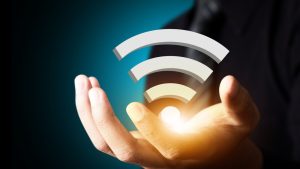
In the connected world of today, public Wi-Fi networks are become an essential aspect of our everyday existence. People use these networks for a variety of things, from light surfing to carrying out crucial job activities. Our most recent poll highlights the need for awareness and preventative measures by illuminating the complex ways in which public Wi-Fi is used and the risks that are involved.
1. Recognizing the Public Wi-Fi Usage Landscape
1.1 A Variety of Justifications for Using Public WiFi
For many people, public Wi-Fi is a lifesaver, providing connectivity when cellphone networks can fail. Utilizing public Wi-Fi for the following purposes
Emergency Connectivity: Public Wi-Fi serves as a fallback when cellular connections are lost.
Social Media and Communication: Public Wi-Fi is frequently used to access platforms like FaceTime and WhatsApp.
International Travel: In order to avoid paying expensive roaming fees, travelers frequently rely on free public Wi-Fi.
Data Usage Management: When it comes to data-intensive activities like streaming, public Wi-Fi helps save cellular data.
Entertainment and Productivity: People use websites like YouTube and Netflix to access material, and they use these platforms to work or study remotely.
1.2 Well-liked Spots to Connect to Free WiFi
According to our survey, there are a variety of scenarios where public Wi-Fi hotspots are concentrated:
38% of respondents said they use free public WiFi at cafes and restaurants.
Hotels: At 38%, hotels are likewise very popular.
Libraries: 33% of users use the free Wi-Fi there, underscoring the value of the space for learning.
Airports: Despite the security dangers involved, almost one-third of respondents utilize the public Wi-Fi there.
Retail Stores and Schools: These places also have high public Wi-Fi usage, highlighting how widely used it is.

2. Views and Apprehensions About Public Wi-Fi Safety
2.1 Diverse Views of Safety
Although many people use public Wi-Fi, different people have different opinions on its safety:
Perceptions of Safety: 43% of respondents think public Wi-Fi is at least somewhat safe, compared to 23% who think it is totally safe.
Security Concerns: 20% voice misgivings, thinking public Wi-Fi is just marginally safe, and 5% thinking it is completely risky.
Lack of Clarity: Nine percent of respondents are unclear whether public Wi-Fi is safe, which suggests that security best practices education is necessary.
2.2 The Riskiest Places to Use Public WiFi
Some configurations are thought to be riskier than others when using public WiFi:
Airports and hotels are considered particularly vulnerable venues, partly because of their temporary nature and higher user volume.
Cafes and restaurants: Although they are very popular, these places can be dangerous for your safety.
Schools: It may surprise you to learn that using public Wi-Fi in schools is often regarded as low-risk.
3. Handling Security Issues and Reducing Hazards
3.1 The Value of Secure Networks
When utilizing public Wi-Fi, users need to be proactive in protecting their personal information.
Use networks equipped with encryption technology, and if you want more security, think about utilizing a Virtual Private Network (VPN).
Protect your passwords: Avoid using unprotected networks as they are more vulnerable to illegal access.
Awareness and Education: Use best practices to safeguard sensitive data and keep yourself updated about potential hazards.
3.2 Alertness and Precautionary Measures
Users ought to use caution and take the following safety measures:
Regular Password Updates: To reduce the possibility of unwanted access, change your passwords frequently.
Firmware Updates: To fix security flaws, keep your router’s firmware updated.
Turn Off Superfluous Features: If not absolutely required, turn off capabilities like remote management and Wi-Fi Protected Setup (WPS).
The increasing use of public Wi-Fi networks highlights the need of comprehending and mitigating related security threats. Users can take use of public Wi-Fi’s convenience without sacrificing their security and privacy by being proactive and aware of potential risks.

4. Answers to Common Questions (FAQs)
1. Is it secure to conduct important business via public WiFi?
A1. Despite the convenience that public Wi-Fi provides, it is best to avoid using it for sensitive transactions unless appropriate security measures are in place.
Q2. When utilizing public Wi-Fi, how can I safeguard my data?
A2. Steer clear of sharing private information on unprotected networks and make use of encrypted connections like VPNs.
Q3. How dangerous are public Wi-Fi networks all the same?
A3. No, there are differences in public Wi-Fi networks’ security. Before connecting, it’s critical to evaluate the security aspects of each network.
Q4. How can I make my home Wi-Fi network more secure?
A4. To improve the security of your home Wi-Fi network, you should upgrade the firmware, change the default passwords, and enable encryption.
Q5. What possible repercussions could using unprotected public Wi-Fi have?
A5. Users of insecure public Wi-Fi networks run the danger of being infected with malware, having their personal information stolen, and having it accessed by unauthorized parties.
While public Wi-Fi networks are incredibly convenient, they should be used carefully to reduce security threats. Through the application of best practices and ongoing education, individuals can reap the advantages of connectivity without jeopardizing their security and privacy.
